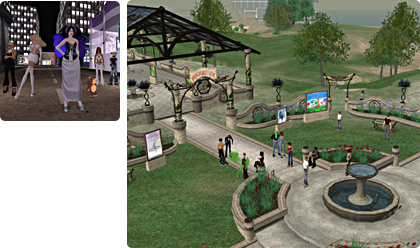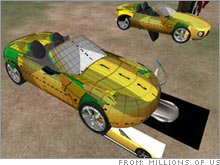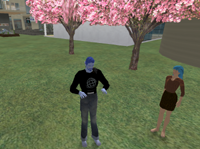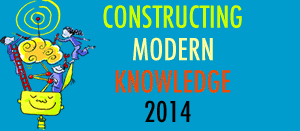 So everybody’s heard something about Second Life by now. Second Life is an online world that you can visit as an “avatar” - a 3D creature that you can design and control. Teen Second Life offers a similar experience for teens 13-17 years old. People purchase virtual land, build virtual homes, sell each other virtual clothes and services, companies have set up virtual shop (CNN - Real Cars Drive into Second Life), and probably every real transaction translated to the virtual world.
So everybody’s heard something about Second Life by now. Second Life is an online world that you can visit as an “avatar” - a 3D creature that you can design and control. Teen Second Life offers a similar experience for teens 13-17 years old. People purchase virtual land, build virtual homes, sell each other virtual clothes and services, companies have set up virtual shop (CNN - Real Cars Drive into Second Life), and probably every real transaction translated to the virtual world.

So what’s the connection to K-12 education?
Educators are allowed in Teen Second Life under very limited conditions, so talking about the use of Second Life in K-12 education fall into two categories.
1. A meeting space for educators in the adult Second Life. ISTE and other educational groups have set up spaces to hold meetings, offer places for virtual collaboration, and experimentation. I’ve been invited to join a group called the Center for Advanced Virtual Education (CAVE) and am looking forward to the experience. Will Richardson, David Warlick, Kathy Schrock and others have been invited. I’m sharing an office with Andy Carvin, and hope to learn a lot. CAVE is a research project of Walden University researcher, Kevin Jarrett.
2. Islands in Teen Second Life created specifically for virtual educational experiences. The 3D building tools and interactive capabilities offer the ability to offer things like role playing exercises, building environments, scripting objects, virtual field trips and more. Suffern Middle School has done some interesting things.
I have to say I’m starting out from a position of skepticism for some of the benefits that people are talking about. I’m not here saying that I don’t see any value or that I don’t want to give it a shot. The truth is that I’ve been in all kinds of virtual worlds from Tapped In, to MUDs and MOOs, and a couple of the original 3D worlds, so long ago I can’t even remember their names. I remember hearing the same “this will change everything” talk back then too.
Things I get:
- a collaboration space
- meeting people you wouldn’t otherwise meet in real life
- some fun building experiences
- designing your own avatar and experimenting with the concept of self
- student role playing, meeting spaces, programming, scripting, constructing and economic simulations
Things I’m suspicious about:
- Unexamined optimism about the educational implications of Second Life. I’ve heard people say, “wouldn’t this be a great place to set up physics simulations.” I don’t see that yet. Besides -the history of educational technology is filled with great physics simulation applications that aren’t used. Why do we think they will be used in a virtual world? Just because you can let the kids have blue hair while they play with the simulations?
- Yes, you can build things, but how easy is to create physical attributes like mass or density? You can set sizes of things, but can you measure them? Can you make a spring? How much math is possible? The scripting language is event-driven, meaning it’s best at reacting to user contact. Will this just mean that we move further away from the “computing” part of computers? I don’t know, that’s why I want to try things myself.
- I fear our tendency to create canned educational experiences so that no one really has to learn the tools. What’s interesting is the ability for kids to make stuff. 3D click-and-explores are not.
- People rushing to find reasons to use this technology in education just because it’s new.
- Precious time wasted avoiding the hard work of teaching and learning in the real world.
 I was just logged in and ran into Doug Johnson (Blue Skunk Blog) - he and I had a blog exchange the other day about “tinker toy” software, meaning tools that offer a “low floor and high ceiling”. Does Second Life meet this criteria? Not sure yet.
I was just logged in and ran into Doug Johnson (Blue Skunk Blog) - he and I had a blog exchange the other day about “tinker toy” software, meaning tools that offer a “low floor and high ceiling”. Does Second Life meet this criteria? Not sure yet.
PS My “in world” name is Kay Idziak - say hi if you see me.
